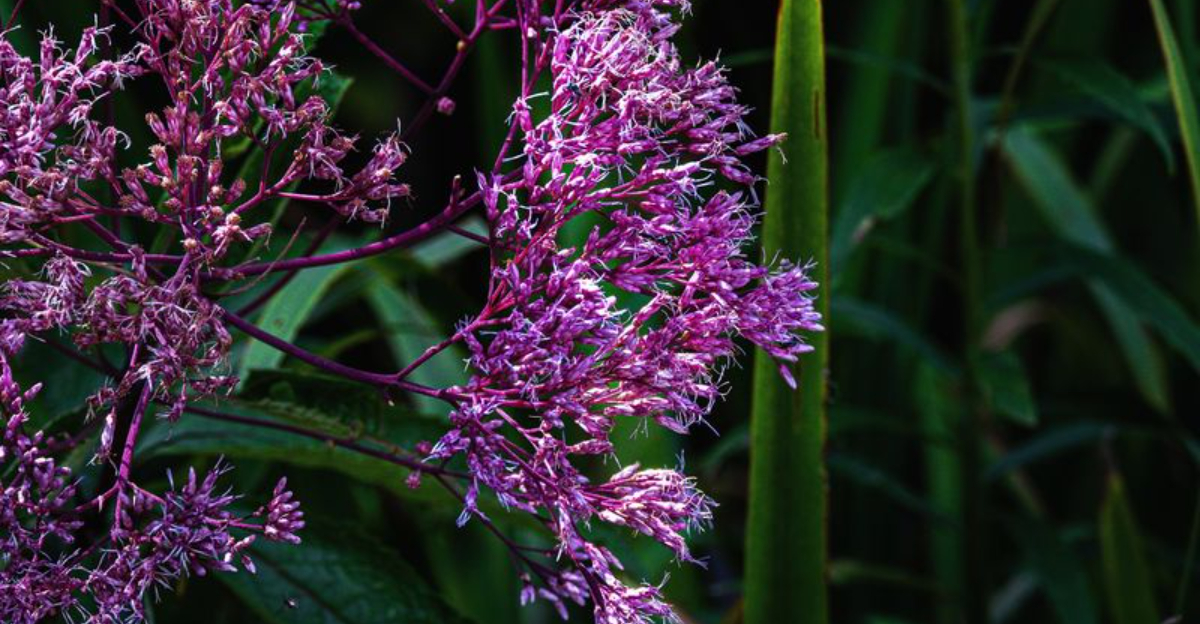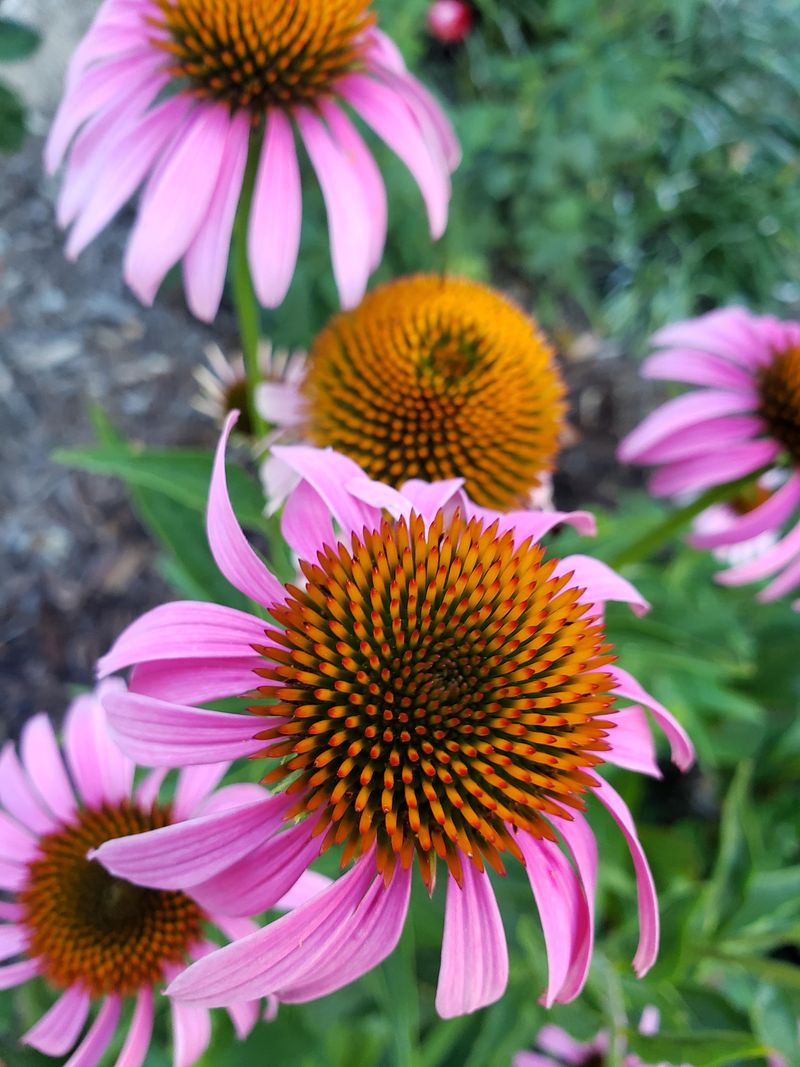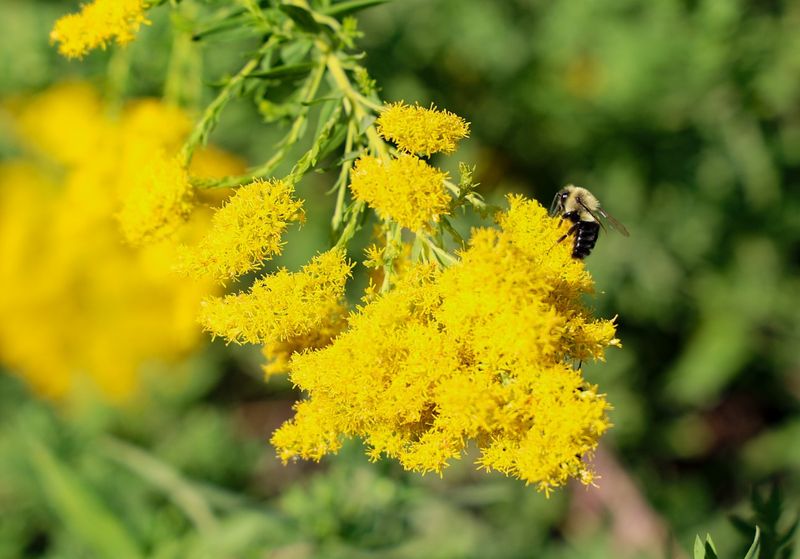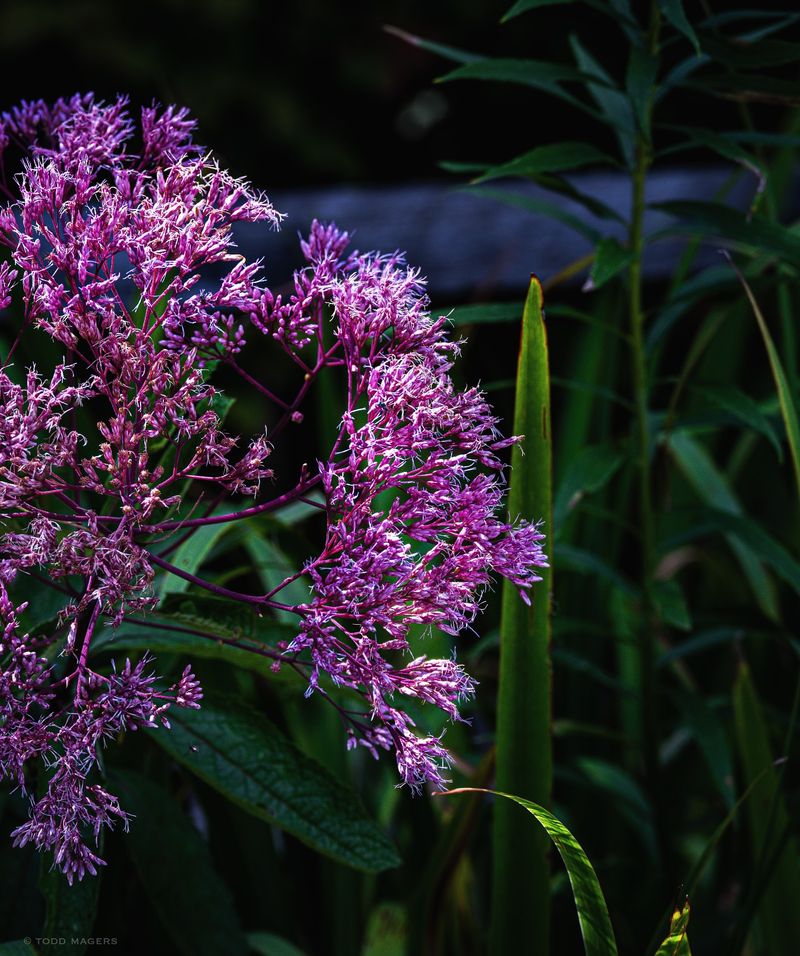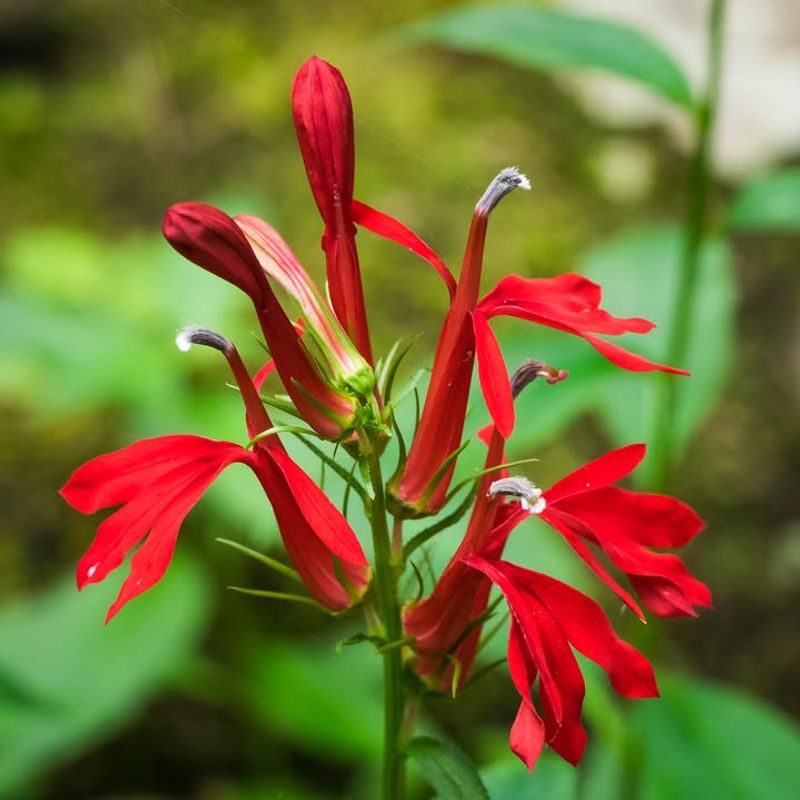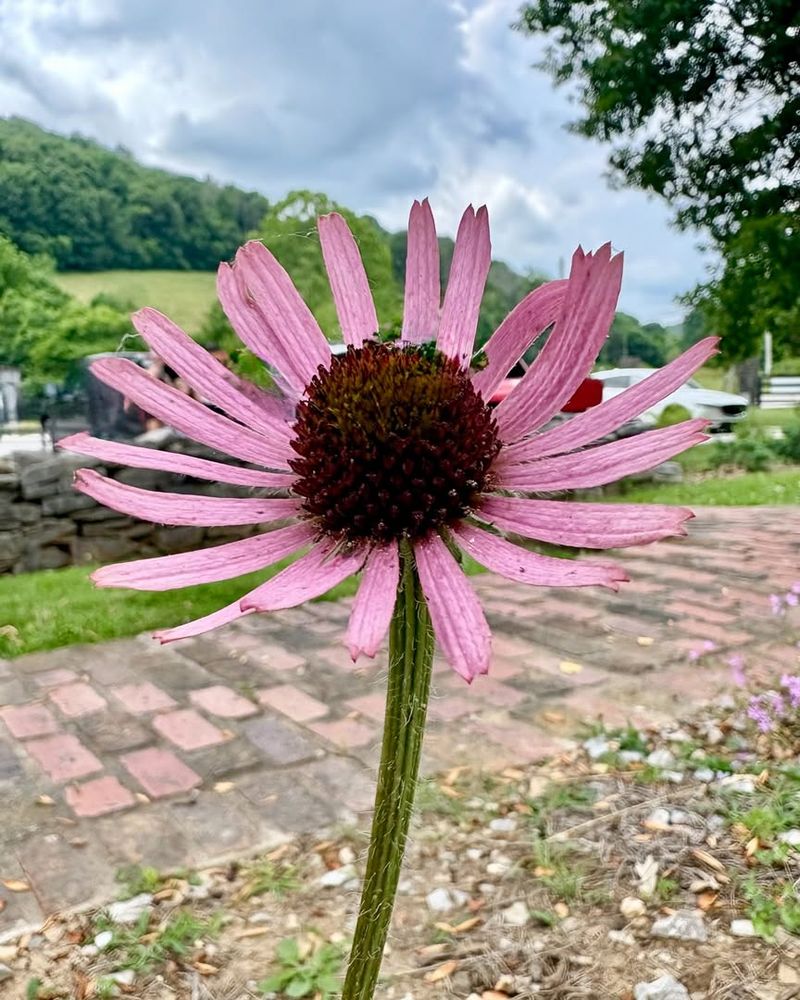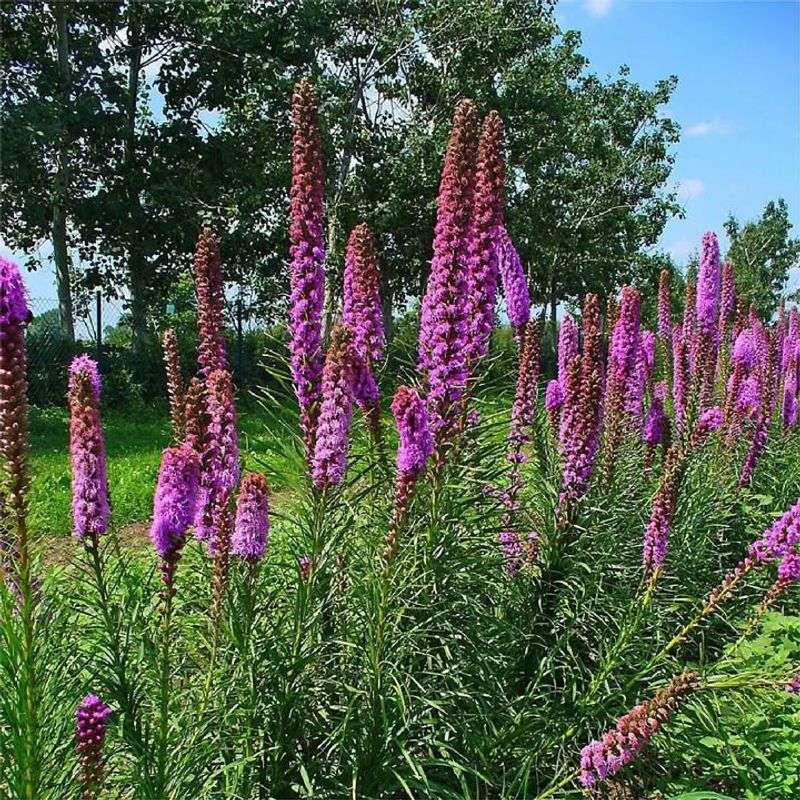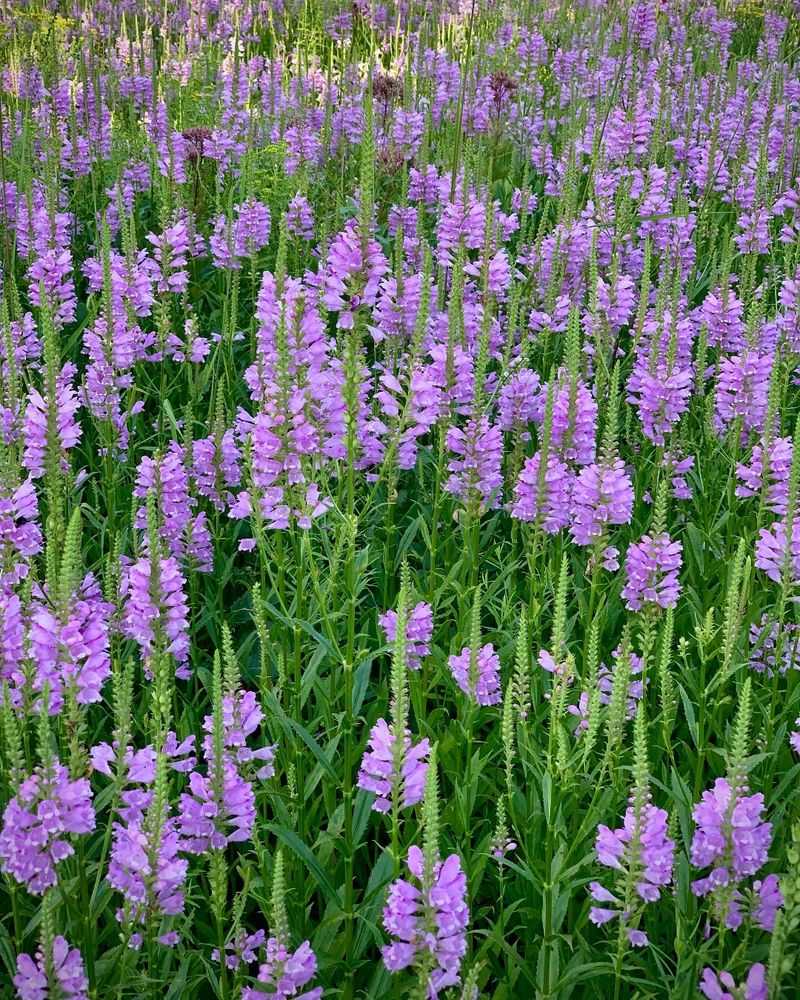Cooler air settles across the hills, and gardens shift into a calmer rhythm as colors deepen and textures gain richness.
Many locals swear this season brings out the true stars of the landscape, the plants that hold steady while others fade.
I often hear gardeners describe a sense of relief once the heat breaks, as if the entire yard finally exhales.
Growth slows, yet certain natives step forward with fresh strength, bold color, and surprising vigor.
Their roots stay steady, their blooms stand firm, and their foliage keeps structure when most borders lose shape. These reliable favorites prove that fall still holds plenty of magic.
1. Purple Coneflower (Echinacea purpurea)
Butterflies and bees absolutely adore this wildflower, making it a magnet for pollinators even as temperatures drop.
Purple coneflower produces stunning pink-purple petals surrounding a spiky orange center that stands tall through autumn.
Gardeners love how tough and reliable this plant becomes once established in Tennessee soil.
Fall planting gives the roots plenty of time to grow deep and strong before winter freezes arrive.
You’ll want to choose a sunny spot with well-draining soil for best results.
Water regularly during the first few weeks, then this beauty becomes quite drought-tolerant.
The flowers bloom from summer into fall, providing nectar when many other plants have finished blooming. Goldfinches enjoy eating the seeds straight from the dried flower heads during winter months.
Purple coneflower also has a long history in Native American medicine.
Expect plants to reach about two to four feet tall with similar spread.
Deadheading spent blooms encourages more flowers, but leaving some seed heads feeds hungry birds.
This perennial returns year after year, spreading slowly to create natural-looking drifts in your landscape.
2. Aster (Symphyotrichum species)
When most garden flowers have called it quits for the season, asters burst into bloom with clouds of purple, blue, or white flowers.
Tennessee gardeners appreciate how these cheerful natives keep the garden colorful well into October and sometimes November.
Monarch butterflies depend on late-blooming asters for fuel during their incredible migration south.
Several native aster species grow naturally across Tennessee, including New England aster and aromatic aster.
Each variety offers slightly different heights and flower colors, but all prefer sunny locations.
Fall planting works beautifully because cooler weather reduces transplant shock.
Asters form bushy clumps that fill in nicely between other perennials in mixed borders.
Their fine-textured foliage looks attractive even before flowers appear in late summer.
Pinching back stems in early summer creates fuller, shorter plants that won’t need staking.
These perennials spread gradually through underground rhizomes, creating larger clumps each year. Dividing established plants every few years keeps them vigorous and blooming heavily.
Asters tolerate various soil types but perform best with consistent moisture and good drainage throughout the growing season.
3. Goldenrod (Solidago species)
Contrary to popular belief, goldenrod doesn’t cause allergies—ragweed, which blooms simultaneously, gets the blame instead.
Brilliant yellow flower spikes light up Tennessee roadsides and meadows each autumn, and they’ll do the same in your garden.
Pollinators visit goldenrod in droves, gathering pollen and nectar before cold weather arrives.
Tennessee hosts numerous goldenrod species, from tall varieties reaching six feet to compact types staying under two feet.
All produce cheerful yellow plumes that arch gracefully in the breeze.
Choose a sunny spot with average to dry soil for best performance.
Goldenrod planted in fall establishes quickly and requires minimal care once settled.
The deep root systems help prevent erosion on slopes while tolerating drought remarkably well.
Pairing goldenrod with purple asters creates stunning color combinations that look professionally designed.
Cut flowers last beautifully in arrangements, bringing autumn’s golden glow indoors.
Some gardeners worry about goldenrod spreading too aggressively, but choosing clump-forming varieties prevents takeover.
Dividing plants every three years maintains vigor while controlling size, and sharing divisions with neighbors spreads native plant appreciation throughout your community.
4. Black-Eyed Susan (Rudbeckia hirta)
Few native flowers bring as much cheerful energy to fall gardens as black-eyed Susans with their sunny yellow petals and chocolate-brown centers.
Children and adults alike smile when spotting these friendly flowers nodding in the breeze.
Tennessee gardeners count on them for reliable color from summer straight through the first frost.
Planting in autumn allows roots to establish during cooler months, resulting in earlier and heavier blooming the following year.
Black-eyed Susans adapt to almost any soil type, from clay to sand, as long as drainage is decent.
Full sun produces the most flowers, though they tolerate light shade reasonably well.
These tough biennials or short-lived perennials often reseed themselves, creating natural colonies without becoming weedy.
Deadheading prolongs blooming, but leaving seed heads provides winter food for songbirds like goldfinches and chickadees.
The hairy foliage deters deer and rabbits from munching.
Black-eyed Susans mix beautifully with ornamental grasses and other prairie-style plants in informal landscapes.
They also work wonderfully in traditional flower borders or cottage gardens. Expect plants to reach one to three feet tall depending on growing conditions and specific variety chosen for your garden space.
5. Joe-Pye Weed (Eutrochium purpureum)
Standing like a gentle giant in the back of borders, Joe-Pye weed can reach six feet or more with enormous clusters of dusty pink flowers.
Swallowtail butterflies visit these blooms constantly during late summer and fall, putting on quite a show. Despite its common name containing the word weed, this native plant deserves respect as a garden star.
Legend says a Native American healer named Joe Pye used this plant as medicine, giving it its unusual name.
Fall planting works exceptionally well because the large root system establishes during dormancy.
Choose locations with moist to average soil and full sun to part shade.
Joe-Pye weed makes a dramatic statement as a specimen plant or creates living privacy screens when planted in groups.
The vanilla-scented flowers attract numerous butterfly species, including monarchs stocking up for migration.
Bees and beneficial insects also visit frequently.
This perennial requires minimal maintenance once established, though consistent moisture produces the tallest, most impressive plants.
The sturdy stems stand through winter, providing architectural interest and seed heads for birds.
Cutting back old growth in early spring makes room for fresh shoots that emerge reliably each year from the established crown.
6. Cardinal Flower (Lobelia cardinalis)
Nothing stops a hummingbird faster than the electric red blooms of cardinal flower lighting up shady, moist areas.
The color is so intense it almost seems to glow, especially in dappled sunlight.
Tennessee gardeners with wet spots or rain gardens find this native absolutely perfect for challenging conditions.
Cardinal flower naturally grows along stream banks and in wetlands throughout Tennessee, so replicating those moist conditions ensures success.
Fall planting into consistently damp soil allows roots to spread before spring growth begins.
Part shade to full sun works, but afternoon shade helps in hot locations.
The tall flower spikes rise two to four feet above rosettes of lance-shaped leaves, blooming from late summer into fall.
Hummingbirds visit repeatedly, hovering at each tubular blossom to sip nectar.
Butterflies also stop by, though the flower shape specifically evolved to accommodate hummingbird beaks.
Cardinal flower lives as a short-lived perennial, typically lasting two to three years, but it often reseeds to maintain its presence.
Mulching around plants helps retain the consistent moisture they crave.
Dividing clumps every couple years or allowing self-seeding ensures you’ll always have these stunning red flowers attracting hummingbirds to your garden throughout the growing season.
7. Tennessee Coneflower (Echinacea tennesseensis)
Growing a plant found nowhere else on Earth except Tennessee makes gardeners feel like conservation heroes.
Tennessee coneflower once teetered on the brink of extinction with only a few wild populations remaining. Thanks to dedicated efforts, this rare beauty now thrives in gardens while still being protected in its natural cedar glade habitats.
Unlike its cousin purple coneflower, Tennessee coneflower has distinctive upward-facing petals instead of drooping ones.
The pink-purple flowers bloom from late spring into fall, attracting pollinators throughout the season.
Planting in autumn gives these special natives time to settle before winter.
Tennessee coneflower prefers sunny spots with excellent drainage, mimicking the rocky cedar glades where it naturally occurs.
It tolerates heat and drought remarkably well once established, making it perfect for low-maintenance landscapes.
The compact size, typically 18 to 24 inches tall, fits nicely in smaller gardens.
Purchasing nursery-propagated plants supports conservation while adding unique Tennessee heritage to your landscape.
Never collect plants from the wild, as remaining natural populations need protection.
Growing this endemic species connects you directly to Tennessee’s botanical history while helping ensure its survival for future generations to appreciate and enjoy.
8. Ironweed (Vernonia species)
Tough as its name suggests, ironweed stands tall through summer heat and keeps blooming into fall with clusters of deep purple flowers.
The color rivals any exotic perennial, yet ironweed grows naturally in Tennessee meadows and roadsides. Butterflies, especially monarchs, treat ironweed like an all-you-can-eat buffet during migration season.
Several ironweed species grow across Tennessee, with New York ironweed being most common in gardens. Heights range from four to seven feet, creating impressive vertical accents in the landscape.
Fall planting allows the extensive root system to develop during dormancy.
Ironweed prefers full sun and tolerates a wide range of soil conditions from dry to moist.
The strong stems rarely need staking despite the plant’s height, living up to its iron-tough reputation.
Fuzzy purple flower clusters appear in late summer and continue through fall.
The seeds provide food for birds after flowers fade, and dried stems add winter interest to the garden. Ironweed spreads slowly through rhizomes, forming impressive clumps over time without becoming invasive. Cutting plants back by half in late spring produces shorter, bushier specimens if you prefer more compact growth for your particular garden design and space requirements.
9. Blazing Star (Liatris species)
Flower spikes like fuzzy purple bottlebrushes stand at attention when blazing star blooms in late summer and fall.
Butterflies cover the flowers so completely that sometimes you can barely see the purple beneath all the fluttering wings.
Tennessee gardeners appreciate how blazing star adds vertical drama to prairie-style plantings and traditional borders alike.
What makes blazing star unusual is that flowers open from the top of the spike downward, opposite of most spike-flowering plants.
Several species grow native to Tennessee, including prairie blazing star and rough blazing star.
All prefer full sun and well-drained soil.
Fall planting works perfectly for blazing star’s corm-like roots, giving them time to establish before spring growth begins.
The grass-like foliage stays low and tidy until flower stalks shoot up two to four feet tall.
Deer usually leave blazing star alone, making it useful in areas with browsing pressure.
Blazing star makes excellent cut flowers, lasting well in arrangements and drying beautifully for winter bouquets. The flowers attract numerous butterfly species along with bees and hummingbirds.
Goldfinches feast on the seeds after blooming finishes, providing entertainment as they perch acrobatically on the dried stems throughout winter months.
10. Obedient Plant (Physostegia virginiana)
Try gently pushing one of the tubular flowers to the side—it stays put, giving this plant its quirky common name.
Obedient plant produces spikes of pink, lavender, or white flowers that keep gardens colorful from late summer through fall.
Tennessee gardeners love how easy and reliable this native perennial becomes once established.
The square stems reveal obedient plant’s membership in the mint family, though it lacks the aromatic oils of culinary mints.
It spreads through underground runners, filling in areas quickly where you want masses of color.
Fall planting allows roots to settle during cooler weather.
Obedient plant tolerates various conditions from full sun to part shade and moist to average soil.
It performs especially well in rain gardens or areas that stay somewhat damp.
The flower spikes reach two to four feet tall, creating nice mid-border height.
Hummingbirds and butterflies visit the tubular flowers frequently, finding the nectar easily accessible.
Some gardeners find obedient plant spreads too enthusiastically, but dividing clumps annually controls growth while providing plenty of plants to share.
The flowers make lovely additions to bouquets, and their unique hinged attachment to stems always sparks conversation when you demonstrate their obedient nature to visitors.

